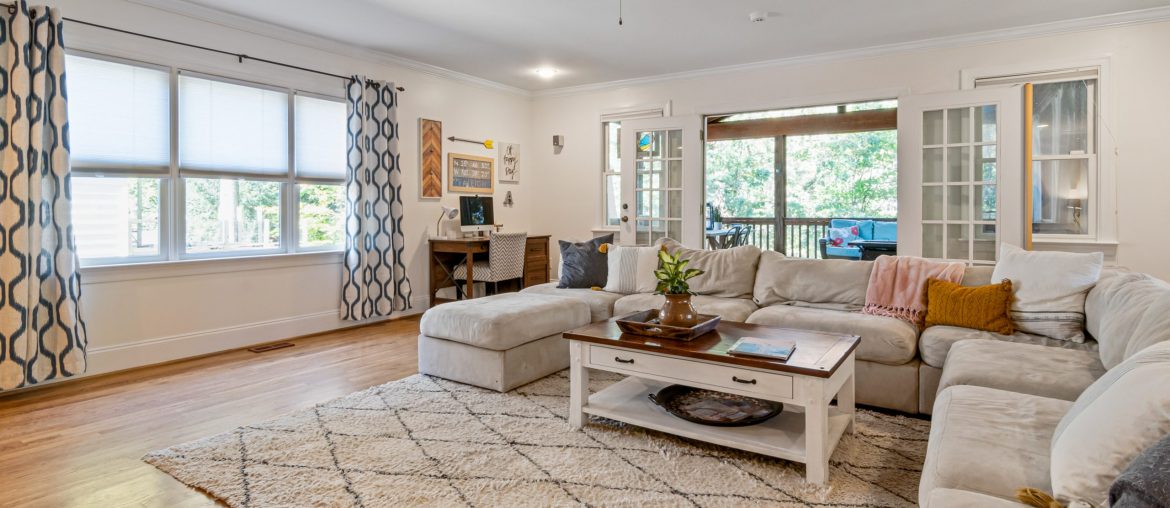There is no substitute for choosing an appropriate interior design style if you care about aesthetics without losing functionality in your home. That is why having a basic idea of famous interior design styles can help you choose the one that suits you best. To that end, we have started a blog series explaining some of the most famous interior design styles in the world. In continuation of that series, today, we will be explaining the transitional interior design.
What is a transitional design style?
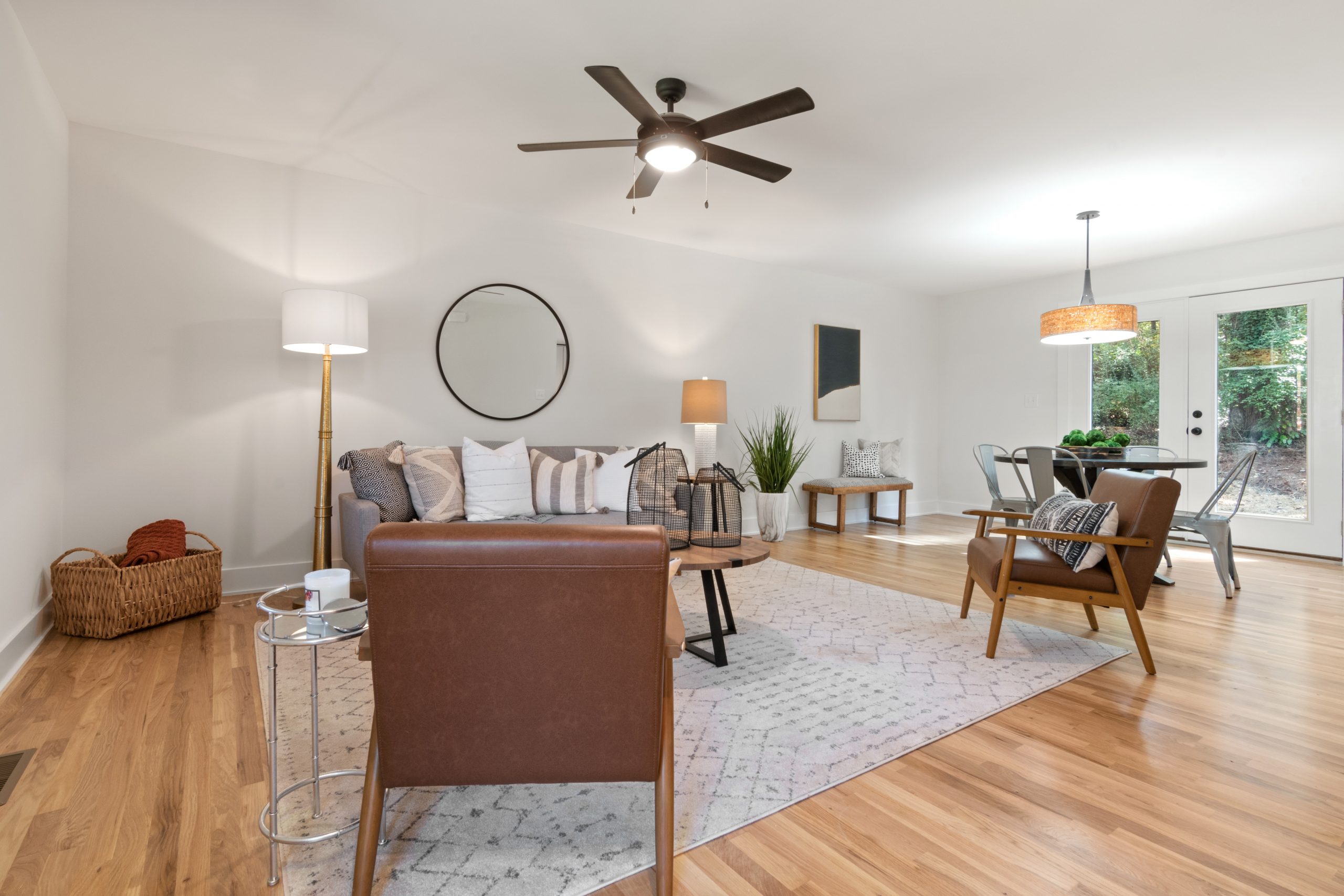
The transitional interior design style is basically a fusion between traditional and contemporary styles. The main intent of this design is to create a classic and contemporary look and feel inside your home.
This design style is not entirely modern, it is not classic either. There is no pride of classic aristocracy but there is a glory of antiquity in this design style. The mechanics of modern design style have not affected it entirely, rather it has chosen to coexist with modernity. Victoria Sass, an expert designer at a world-famous interior design studio, says, “The word ‘transit’ means the middle ground between the past and the present. The transitional design style, therefore, is a fusion between the traditional and the contemporary style in the most amazing way.’
History of Transitional design style
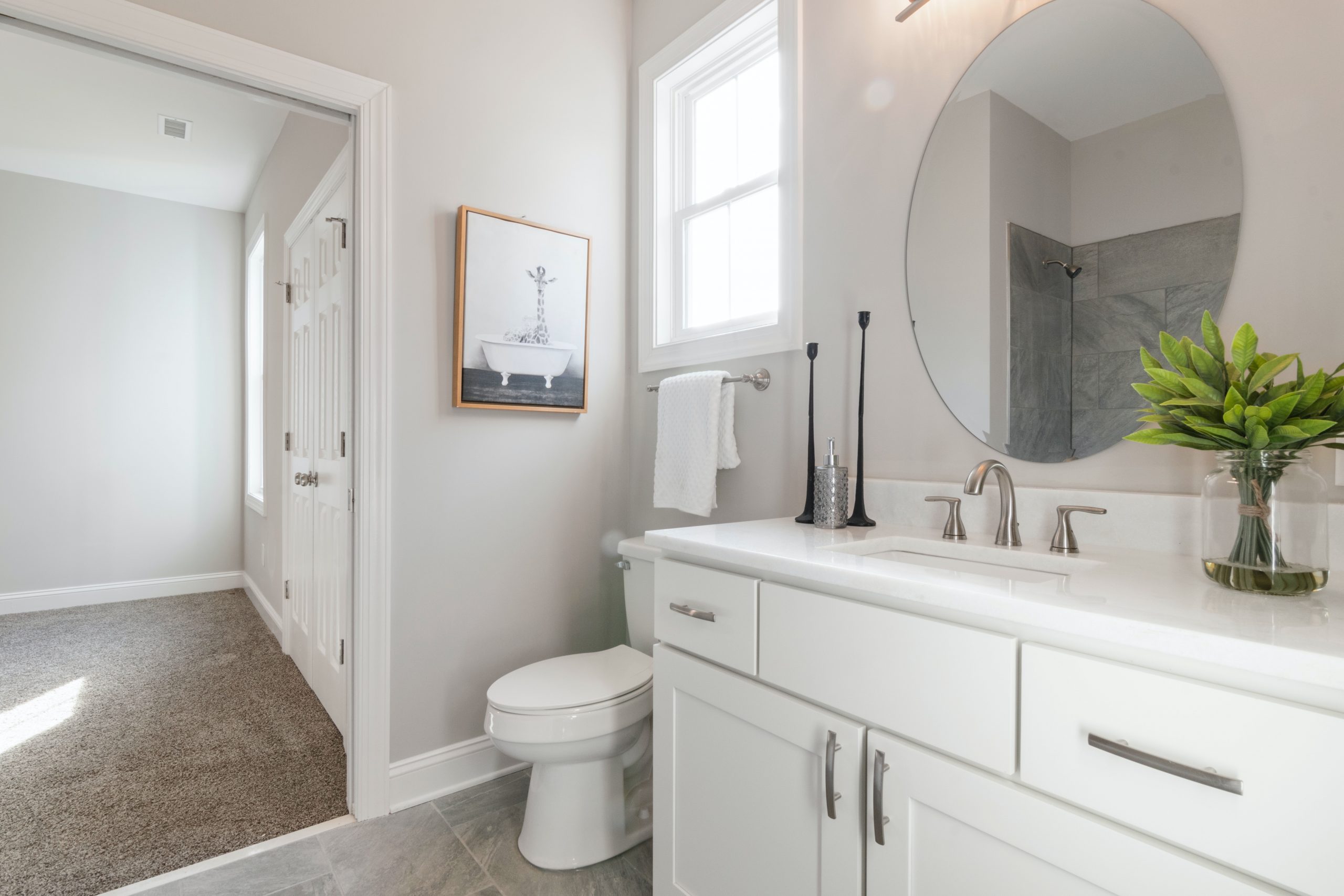
The transitional design style was referred to as ‘classic-modernism’. It originated in the early 1950s with the opposite ideology of the more popular mid-century modern design style.
The practice of modernism was at its peak from 1940-1960. At that time the usage of smooth-straight lines in furniture, large glass windows, geometric shapes was prominent everywhere in the house. But such a modern design in the kitchen did not quite suit the taste of some people. As a result, they fuse the contemporary style with the traditional design style in the kitchen first. Later, this design style gradually spread to other rooms, eventually the entire house and came to be known as the transitional design style.
The mantra of Transitional interior design
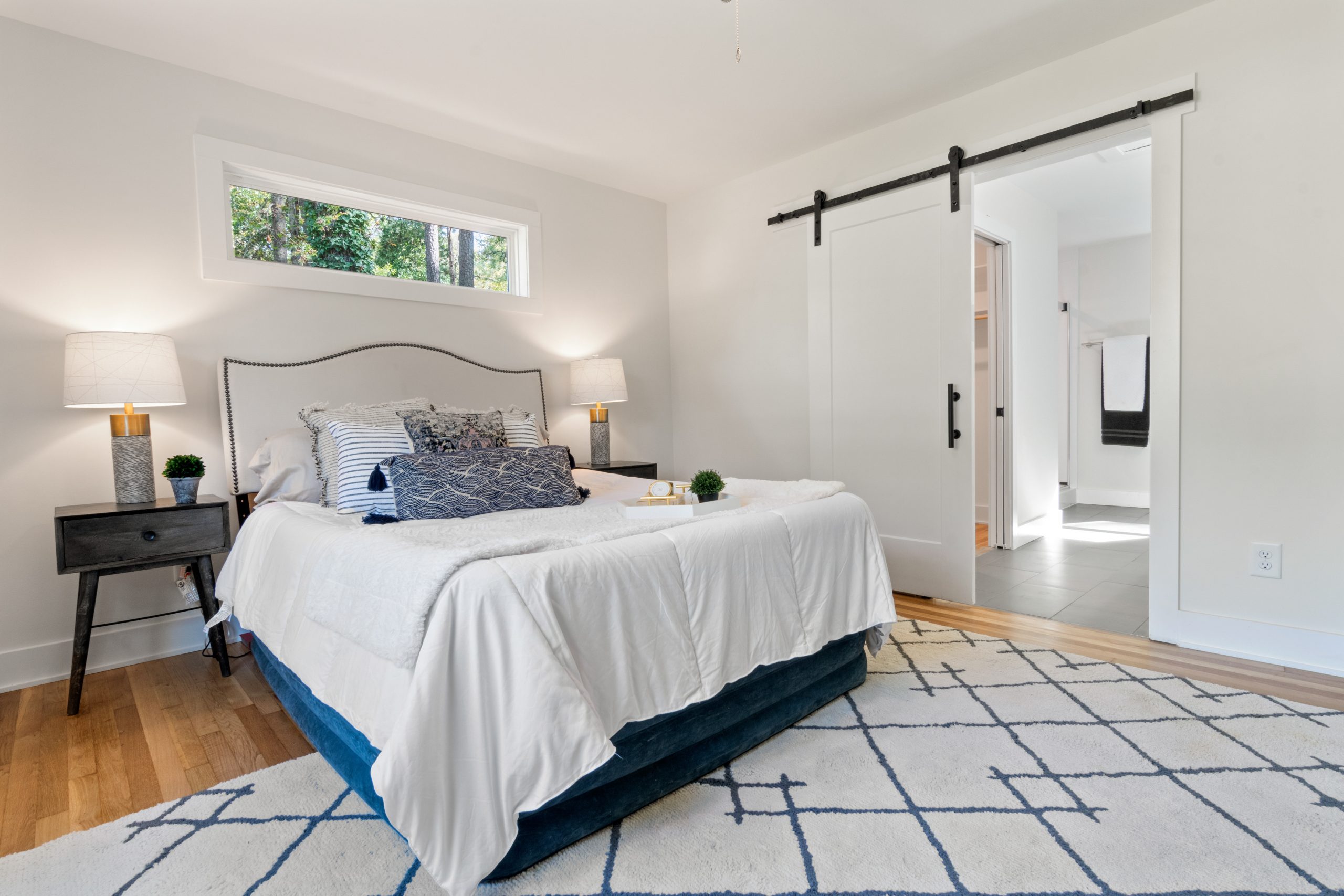
The transitional interior style is a blend of the classical aristocracy and cozy modernity. Here are some important attributes of this design style.
Neutral-dark color
Neutral colors such as white, beige, gray, tan, vanilla shades are used on the walls or floor to bring the decor style to life. However, dark brown, navy blue, bottle green are also used for creating an accent wall. Creating contrast with darker shades in the transitional interior design is very common.
Minimalism
The impression of antiquity is apparent in the transitional interior design, but without the heavy and intricately designed textiles and furniture that we see in the Victorian style. Rather it put an emphasis on creating a neat and clean look throughout. Which in turn, lead this design style to adopt a minimalistic approach.
Layering of different elements
Layering different elements is an important step in bringing a transitional decor style to life. Materials such as wood, glass, cloth, steel, brass, etc. are used as layering elements. For example, a patterned textile on metal furniture or a large mirror in a wooden frame can make up for a seamless transitional interior design.
Straight lines and curves
The impact of straight lines and curves in the transitional design style is huge. Because the primary intent of this design style is to create a classic and contemporary look and feel throughout the house by adopting a minimalistic approach. And it does that by incorporating straight lines and smart curves in design elements like furniture and textiles. However, unlike modern or contemporary design style, this doesn’t focus just on clean or straight lines. Instead, it also focuses on rounded corners and curvy structures.
How to decorate a house in a transitional style
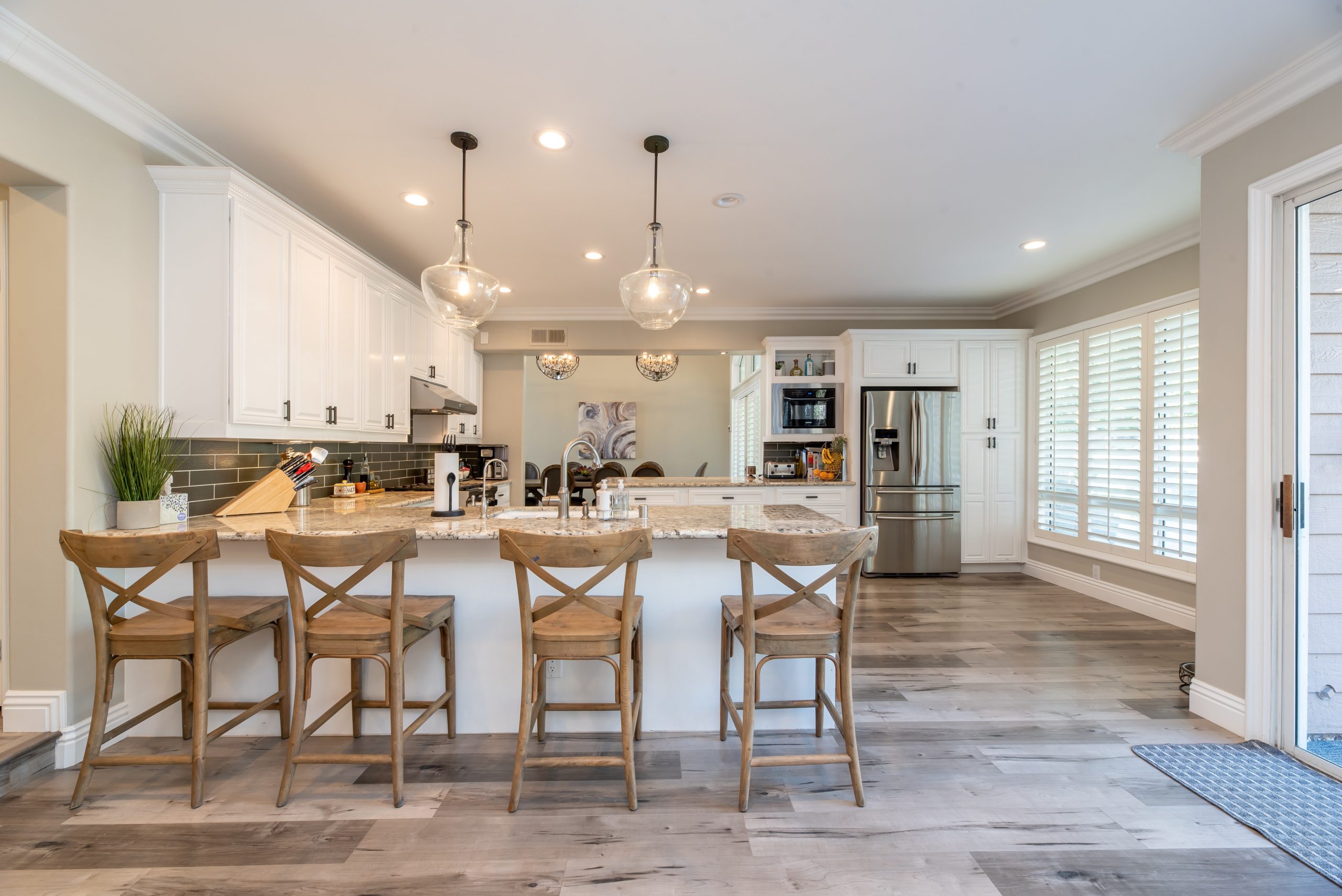
Transitional interior design is very useful for those who want to perceive and enjoy the contrast between past and present, classic and modern. Here is how you can decorate your house with this design.
There are no hard and fast rules in the transitional interior design style that will tell you whether to choose modernity in furniture or decor. But if you choose modern furniture, then you should choose a classic theme for other decorating elements. And if you choose classic furniture, then go with a contemporary style decoration. For instance, if your dining table is modern and slick, choose something classic like a hand-woven traditional chair cover or a runner. And if you have a traditional dining table, you can use modern metallic pendant lights to create a contemporary vibe. It’s not just creating contrasts between furniture and decor. You can use the same principle with material as well. For example, you can use metallic kitchen countertops and modern flooring in a traditional kitchen setting.
A transitional interior design is a fusion between classic and contemporary. It brings an aesthetic blend of modernity and antiquity into your home by creating a design that transcends the barrier of time. With Bproperty’s help, you can also decorate your house with the transitional design style too! Contact us:
Call: 09612110011
email: interior@bproperty.com
Visit: https://my.bproperty.com/interior

